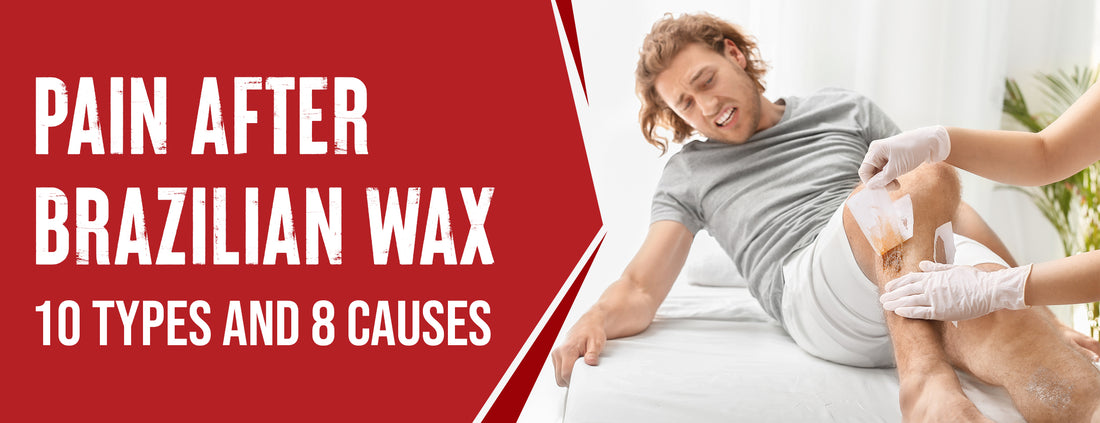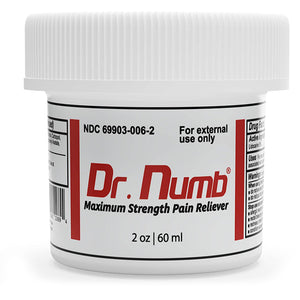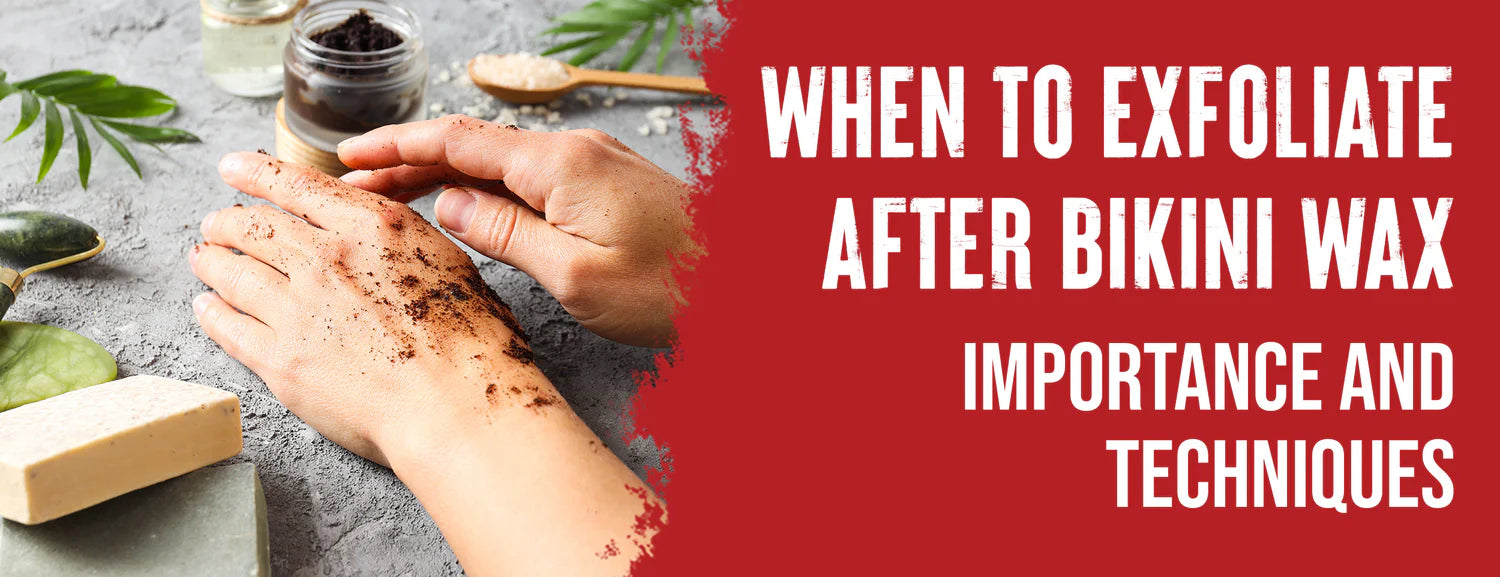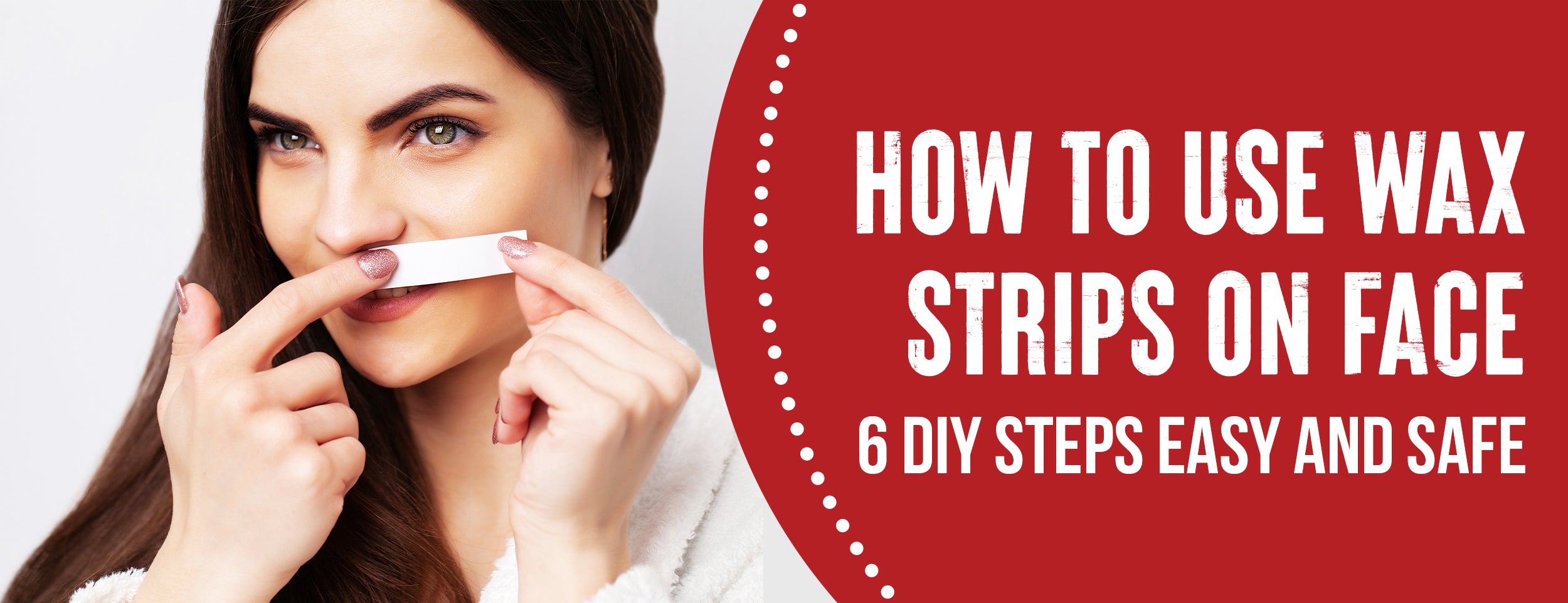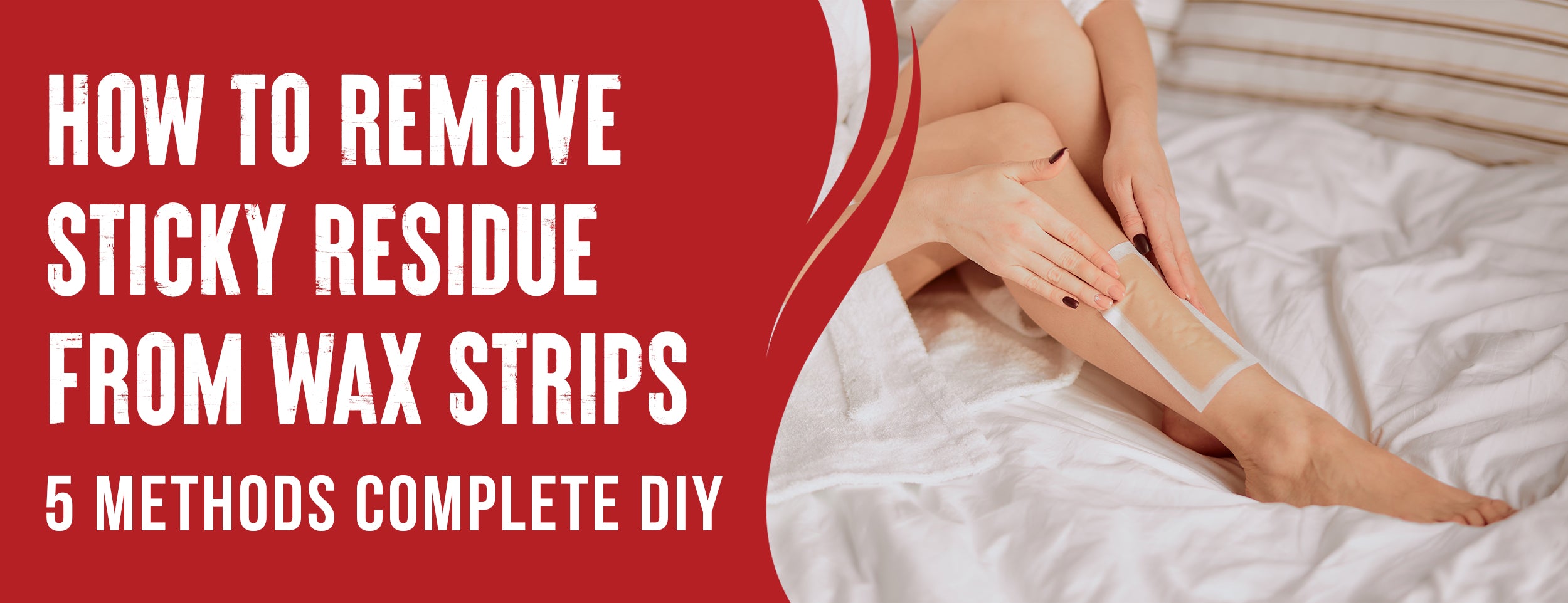Post-Brazilian wax pain is common, with symptoms like inflammation, redness, and potential bumps. These discomforts subside in a day or two, though coarser, thicker hair may require more recovery.
While waxing comes with pain, there are ways to alleviate it. Consider using pain relievers like ibuprofen. Soothing the area with a cool bath or ice wrapped in a washcloth can also help. Additionally, using a numbing cream like Dr. Numb® before your waxing session can significantly reduce discomfort, making the experience much more tolerable.
The benefits of a hair-free nether region are undeniable, but post-wax pain can dampen the experience. Don't worry. We're here to help.
In this blog post, we'll dive into the causes of after-waxing pain, explore different discomforts you may encounter, and share strategies to alleviate the pain. Keep reading to discover how to enjoy a Brazilian wax experience free from misery.
Pain After Brazilian Wax: 10 Types

Learn about the various pain types associated with Brazilian waxing in this informative guide. From mild discomfort to intense sensations, discover what to expect for a smoother and hair-free experience.
Painful Bumps and Whiteheads
After getting a Brazilian wax, it is normal to experience some mild irritation and redness. If you notice painful bumps or whiteheads, this could indicate folliculitis. Folliculitis is a common skin condition when hair follicles infect with bacteria or fungal infections.

Painful Urination
If you experience painful urination after a Brazilian wax, this could be a sign of a urinary tract infection (UTI). Bacteria enter the urethra and bladder, causing painful and frequent urination. To prevent UTIs, drink plenty of water after your wax and avoid using harsh soaps and products on the area.
Painful Rash or Red Bumps
A painful rash or red bumps could indicate an allergic reaction to the wax or other products used during or after the procedure. See medical attention immediately if you notice any unusual redness, swelling, or itching.
Stomach Pain or Discomfort
Some people may experience stomach pain or discomfort after a Brazilian wax. This could be due to swallowing too much air during the procedure or the experience's stress. To prevent this, try to relax during the process and practice deep breathing exercises.
Pain during Intercourse

It is common to experience pain or discomfort during intercourse after a Brazilian wax. This is because the hair follicles and skin in the area are sensitive and can become irritated after the procedure. To reduce pain during intercourse, avoid having sex within 24 hours of your wax.
Ingrown Hair
A common side effect of waxing is ingrown hair. They occur when hair grows back into the skin instead of growing out of the follicle. To prevent ingrown hairs, exfoliate the area regularly and avoid wearing tight clothing or underwear.
Redness and Irritation
Redness and irritation are common after waxing. If the redness and irritation are severe or last more than a few hours, this could indicate an allergic reaction or infection. Seek medical attention if the symptoms persist.

Allergic Reactions
Some people may experience allergic reactions when exposed to wax in the procedure. You should seek medical attention immediately if you experience unusual symptoms such as swelling, hives, or difficulty breathing.
Bleeding or Bruising
It is common to experience minor bleeding or bruising after a Brazilian wax. This is usually due to the removal of hair at the root. To avoid bleeding and bruising, communicate with your esthetician during the procedure and let them know if you are experiencing any discomfort.
Infection
Infections are rare but can occur if the waxing equipment is not sterilized correctly or the waxing technician does not follow proper hygiene protocols. Symptoms of the disease include pain, swelling, redness, and possible discharge. You should seek medical attention if you suspect an infection.
Brazilian after-wax pain: 8 Common causes

Despite the many benefits accompanying this hair removal method, it can result in pain post-waxing, which is a common issue. We will explore the common causes of pain after Brazilian wax and how to alleviate them.
Skin Inflammation and Sensitivity
Another common cause of pain after Brazilian waxing is skin inflammation and sensitivity. The waxing process can irritate your skin and cause it to become inflamed. Additionally, the waxing process can be even more uncomfortable for sensitive skin. Symptoms of skin inflammation and sensitivity include redness, rashes, and swelling.
Ingrown Hairs
One of the most frustrating things about waxing is the potential for ingrown hairs. Clogged hair follicles cause hair to grow sideways or back into the skin. Ingrown hairs are not only unsightly but can also be quite painful. Symptoms of ingrown hairs include redness, swelling, and bumps.
Skin Irritation
Waxing can cause skin irritation and redness when hair is removed. Some people may even experience bumps or rashes in the pubic area after waxing. This is common for first-time waxers or if the site needs to be well-prepped before the procedure.
Incorrect Waxing Technique
If you use the wrong waxing technique, it is also possible to experience more pain and discomfort after Brazilian waxing. Too hot wax can burn the skin, leading to pain and even scarring. If the wax is not applied correctly, it can break the hair unevenly, leading to ingrown hairs.

Hyperpigmentation
In post-inflammatory hyperpigmentation (PIH), the skin becomes darker in color. PIH occurs when the skin becomes inflamed, leading to an overproduction of melanin.
PIH is common after waxing and can happen to anyone, regardless of skin color. To reduce the likelihood of PIH, avoid exposure to the sun after waxing and apply sunscreen daily. Wait at least 24 hours before applying lotions, creams, or perfumes to the waxed area.
The Wrong Type of Wax
One of the primary reasons behind pain after Brazilian wax is the wrong type of wax being used. Several types of wax are available in the market, including soft, rigid, strip, and stripless.
Inexperienced waxers or salons who focus on reducing costs may use low-quality wax that isn't appropriate for sensitive skin areas like the bikini line. The wrong type of wax can be too sticky, harsh, or even cause allergic reactions, leading to intense pain and skin damage.
Rushed Service
A rushed service can lead to several hair strands being ripped out, leaving behind painful and unsightly ingrown hair. Being waxed in a rush means the technician might not be making precise efforts to minimize pain while hair is removed entirely. A rushed service will also make achieving a clean and smooth result harder.
Lack of Confidence
Many salons or technicians may need more self-assurance while performing Brazilian waxing. The lack of confidence may lead to slow work, hesitation, or outright avoidance of taking on more complex scenarios. This lack of confidence can lead to pain and discomfort during the waxing process, resulting in unsatisfactory results.
Pain after Brazilian Wax: Immediate Relief Strategies

Following these immediate relief strategies after a Brazilian wax can help manage the pain and discomfort associated with it.
Cooling and Soothing
You can use the following cooling and soothing techniques to minimize pain and irritation after a Brazilian wax.
Application of Cold Compress or Ice Packs
One of the most effective ways to get immediate pain relief after a Brazilian waxing session is to place an ice pack on the waxed area. This can help constrict the blood vessels and reduce inflammation, relieving pain. An ice pack or towel containing a few ice cubes can gently apply it to the skin for a few minutes.
Aloe Vera Gel or Soothing Creams
Aloe vera gel or other soothing creams can help reduce inflammation and soothe the skin after waxing. They can help hydrate and calm the skin, preventing dryness and irritation. Put a thin layer of the cream or gel on the waxed area and gently rub it in.

Avoiding Irritation
To prevent infections and further irritation, you can follow these hygiene tips.
Loose Clothing to Prevent Friction
After having a Brazilian wax, it's advisable to wear loose clothing that doesn't cause any friction on the skin. Friction can increase the irritation and discomfort of the skin and prolong the pain. Choose breathable fabrics such as cotton, and avoid tight-fitting clothes.
Avoiding Tight Undergarments
Tight undergarments can cause friction and irritation on the waxed area, worsening the pain. It's best to wear loose-fitting undergarments made of breathable fabrics to prevent any irritation.
Hygiene Tips

You can use the following hygiene tips to protect against infections and irritations.
Mild and Non-Irritating Cleansing
Post-waxing hygiene is essential to prevent any infections and reduce pain. It's best to use mild, non-irritating products that won't cause further skin irritation. Use a gentle cleanser to wash the waxed area and avoid scrubbing, which can cause pain and redness.
Avoiding Hot Baths and Saunas
Hot baths and saunas can increase the blood flow to the waxed area and cause more pain and discomfort. It's best to avoid hot water and steam for at least 24 hours after waxing.
Pat-Drying The Area Instead of Rubbing
When drying the waxed area, it's best to pat gently with a clean towel instead of rubbing vigorously. Rubbing can cause further irritation and prolong the pain.
Over-The-Counter Pain Relief
If the pain and discomfort persist, you can use over-the-counter pain relief medications or creams.

Topical Analgesics
Topical analgesics can help provide relief from the pain and reduce inflammation. Look for creams or gels that contain lidocaine or benzocaine, and apply them to the waxed area as directed.
Hydrocortisone Cream
Hydrocortisone cream can help reduce inflammation and relieve itching, redness, and pain. Apply a thin layer of cream to waxed areas and rub gently.
Avoiding Irritants and Tight Clothing
It's important to avoid irritants and tight clothing after waxing to prevent further irritation and pain. You should wear loose-fitting clothing with breathable fabrics and avoid using harsh chemicals on the waxed area.
Hygiene Practices for Soothing Effects
Maintain good hygiene practices to soothe the waxed area and promote healing. Use a mild, non-irritating soap to cleanse the site, and avoid touching it with dirty hands. Apply an antiseptic cream or lotion to prevent infections and promote healing.
Pain after Brazilian Wax: long-Term Pain Management
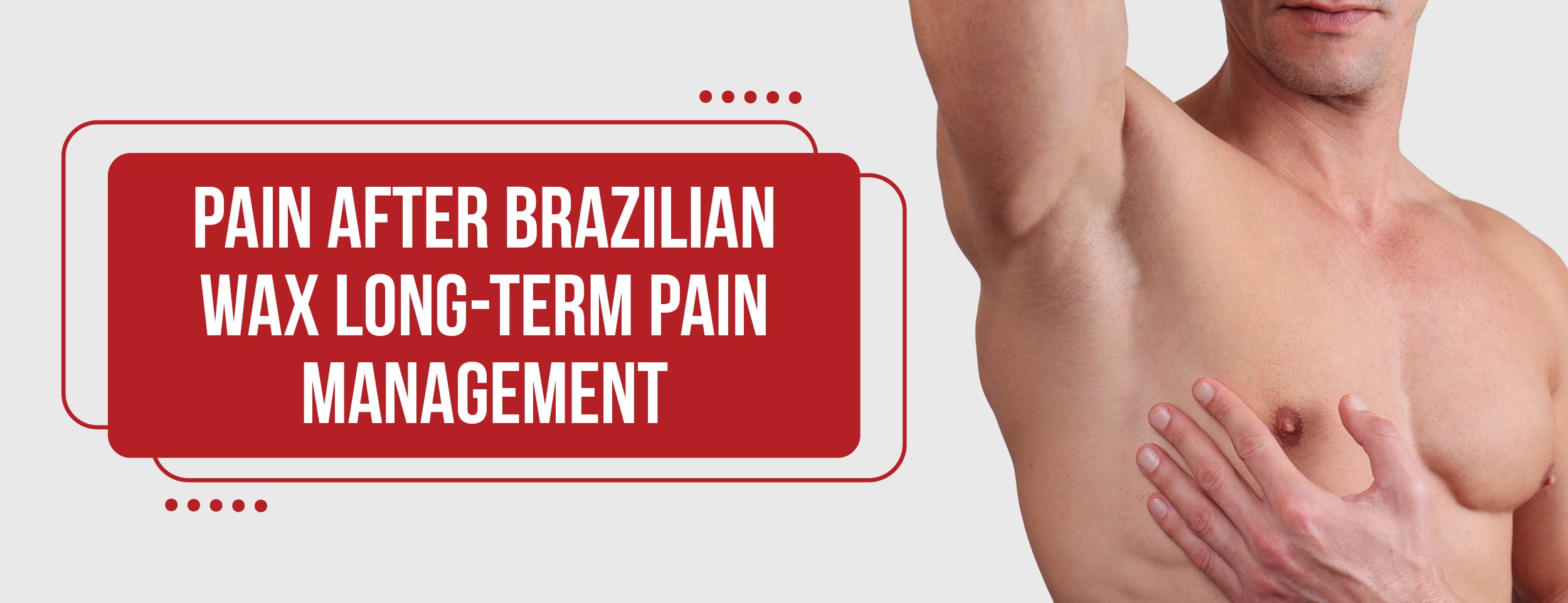
Long-term pain management is essential after a Brazilian wax. Here are some tips on how to alleviate the pain and discomfort following a Brazilian wax:
Preventing Hair Ingrowns
One of the most common issues after waxing as hair cuticles can curl under the surface and cause discomfort. Consider the following techniques to prevent ingrown hairs.
- Exfoliation techniques: Exfoliate your skin gently to stimulate blood flow and remove dead skin cells. This technique helps to prevent the hair from growing back inwards.
- Use of exfoliating products: Use exfoliating products like sugar scrubs or chemical exfoliants to keep your skin smooth.
- Proper aftercare instructions: It is essential to follow appropriate aftercare instructions provided by your esthetician to avoid complications.
Reducing Inflammation
Inflammation is joint after waxing, leading to redness, itching, and pain. Here are a few tips to reduce inflammation.
- Application of anti-inflammatory creams: Apply anti-inflammatory creams like aloe vera gel or cortisone cream to reduce inflammation and discomfort.
- Natural remedies: Natural remedies like chamomile or tea tree oil have anti-inflammatory properties that can help reduce swelling and pain. Consider using them in small quantities.

Hair Growth Retardation
Hair growth is a natural process that cannot be entirely stopped, but some techniques can slow growth.
- Use of hair growth inhibitors: Apply hair growth inhibitors or serums to the area where hair growth is unwanted to reduce and slow down hair growth.
- Consideration of laser hair removal: Consider laser hair removal for a permanent solution to hair growth.
Gentle Moisturization
Moisturization is crucial after waxing as the skin becomes sensitive and prone to irritation and dryness. Consider the following tips to keep your skin moisturized and nourished.
- Typical pain period: The pain typically lingers for 24-48 hours following a waxing session but gradually subsides as time goes on
- Expect during the healing process: You can expect some redness, discomfort, and sensitivity during the first few days post-wax. Avoiding activities that could increase your pain and aggravate the affected area is essential.
Pain-Free Brazilian Wax: Tips

You can take several steps to minimize pain and discomfort during and after your waxing session. Here are some valuable tips:
Pre-wax Preparation
- Exfoliation and skin preparation: Exfoliating your body before waxing can significantly improve pain management. Removes dead skin cells, unclogs pores, and makes hair follicles more accessible for hair removal. Use gentle exfoliants like sugar scrubs or loofahs, avoiding harsh chemicals.
- Trimming hair to the appropriate length: If your hair is too long, it can tug and make the waxing process more painful. On the other hand, if it's too short, it might not adhere well to the wax and lead to missed spots. The ideal length for waxing is around 1/4 to 1/2 inch. Use scissors or a trimmer to trim your hair to the desired size before your appointment.
Choosing a Skilled Waxing Professional
Choosing a professional esthetician experienced in Brazilian waxing is crucial to getting the best results with minimal pain. Find a reputable waxing salon. Ensure the esthetician is licensed and certified, uses high-quality waxes and equipment, and follows proper hygiene and safety protocols to prevent infections.

Communicating your concerns to the esthetician
Communication is vital when it comes to Brazilian waxing. Discuss your concerns, skin sensitivities, or health conditions with your esthetician before your session.
They can recommend suitable waxing techniques, adjust the temperature of the wax, or use hypoallergenic wax products to minimize skin irritation and pain.
Waxing Breaks for Better Skin Recovery
Repeated waxing can lead to skin irritation, redness, and inflammation, particularly in sensitive areas like the bikini line. Take breaks between waxing sessions to avoid discomfort and promote better skin recovery.
Conclusion
A Brazilian wax does not have to be as painful as some portray it. Understanding the causes and types of post-waxing discomfort is crucial in managing the pain. The strategies we discussed, including cooling and soothing, avoiding irritation, and long-term pain management, can go a long way in making the recovery process smoother and less painful.
Communication with the esthetician is critical, especially concerning concerns or sensitivities. Getting a Brazilian wax can be a comfortable, empowering experience with proper preparation and aftercare. We hope this post has given you the knowledge and tools to make your next wax appointment a breeze.

